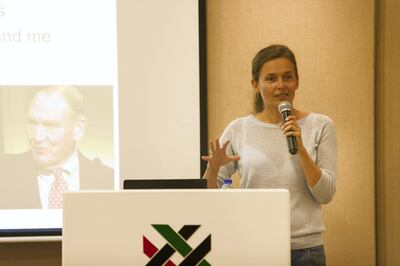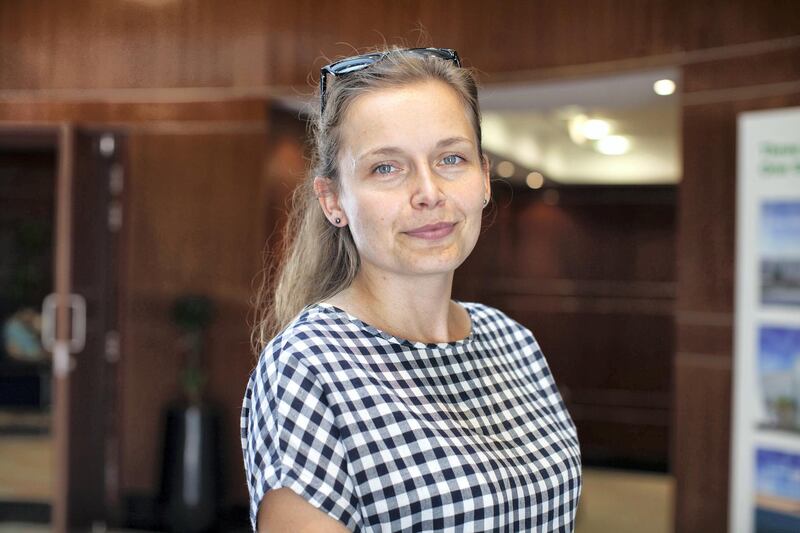Warren Buffett, one of the world’s most successful investors, once said: “investing is simple, but not easy”.
Bogleheads - investors who follow the principles established by Jack Bogle, the founder of Vanguard, one of the world’s largest investment companies - aim to change that.
The Bogleheads community, which was founded in 1998 in the United States, claims anyone can become a successful investor with very little effort by buying low cost, broadly diversified index funds that they hold long-term. The principle of this is that the stock market – although often volatile – grows over time, and therefore offers good returns to investors willing to wait.
Here in the Emirates, a group of followers of the philosophy founded the nonprofit personal finance community, the UAE Bogleheads Chapter, three years ago, and have met regularly ever since to share what they have learned with others.
The group’s four founding members have all invested very successfully using the philosophy, despite not having any qualifications or previous experience. And they have done it without using financial advisers, whom they claim often have conflicts of interest.
“We are just a bunch of people who like to talk about money and make sure our money works well for us,” says Sebastien Aguilar, 31, a consultant in energy management, from Belgium, a founding member of the group.
“We are here to share our understanding and experience and hope that it will be useful to you as well on your financial journey.”
In a recent session, Dorota Aguilar, 33, from Poland, explored the basics of the investment strategy, explaining its 10 key principles:
1. Choose a sound financial lifestyle and create a plan
This involves moving from a pay cheque mentality to a net worth mentality, says Ms Aguilar, who is married to Mr Aguilar. People should also pay off any costly credit card debt and establish an emergency fund to cover unplanned expenses.
“Then create a financial plan,” says Ms Aguilar. “These are very simple statements – I will save 30 per cent of my monthly salary. I will keep five months of my monthly expenses as my emergency fund at all times, so it’s always going to be there. I won’t spend it on a holiday or this or that. I will invest all my savings into low index funds.”
She suggests saving monthly and investing quarterly to save on foreign exchange costs and other fees.
2. Invest early and often
Ms Aguilar says investing early is important because it helps harness the power of compound interest. She cited two examples from the Bogleheads Guide to Investing book, characters called Eric Early and Larry Lately.
Eric Early started saving and investing when he was 25 and invested $4,000 annually from the age of 25 for 10 years, stopping at the age of 35. Assuming the stock market had grown at an average annual rate of 7 per cent, after 40 years, and the age of 65, he would have $450,146, despite having only invested $40,000.
Larry Lately started saving later at the age of 35, also $4,000 a year, but kept going for 30 years. By the age of 65, assuming the stock market had also grown 7 per cent on average annually, he would have $404,292, having invested $120,000 over the period - and ending up with less than Eric Early, who saved for a substantially shorter period.
“The difference here is that it took him much longer to arrive at this number because he missed the first 10 years of compounding interest. It works exponentially. So if you miss the beginning, you just delay the process of the bigger growth. And that is why we always highlight investing early as really important,” says Ms Aguilar.
3. Never bear too much or too little risk
Bogleheads advises keeping it simple and only investing in stocks, which are issued by companies and represent the growth part of your portfolio, and bonds, which are issued by governments and are more stable, but offer lower returns.
“Once you understand what is what, and you want to create your portfolio, how do you know how much stock you need?” says Ms Aguilar.
“As a rule of thumb, something the Bogleheads group likes to refer to, is that you hold your age in bonds. If I’m 18, I can buy 18 per cent of bonds and every year, I can add a percentage as I turn one year older. But that is not set in stone. Some people like to feel more stable.”
4. Diversify
Some investors choose to invest into companies like Amazon, Apple and Google because they are successful and offer good returns, but if they lose money, shareholders do too. That is why Bogleheads say it is much safer to invest in index funds – which is a type of fund that matches or tracks a market index like Standard & Poor’s 500 Index.
“This index fund holds 500 companies, so if one of them goes down, you probably won’t feel much of an impact in your portfolio. So now you have diversified from three stocks to 500. The more diversified, the better,” says Ms Aguilar.
______
Read more:
'I retired at 48, but I still wish I'd made smarter investment choices'
UAE financial advisers feel strain of tighter regulations
Dubai resident: 'I retired at 37 after achieving financial independence in two years'
Group investment effort begins to pay off
_____
5. Never try to time the market
People are paid a lot of money to predict the market, and they still get it wrong, says Ms Aguilar. So you should never try to time the market.
“None of us knows what is going to happen so let’s not try to time it. Let’s just stick to our plan. We wrote it at the beginning for a reason and decided what we are going to invest into. Let’s do it, stick to it and stay the course and then rebalance our money."
If your strategy is to hold 30 per cent bonds and 70 per cent stocks, you can and should rebalance it if it changes. This is easy to do, says Ms Aguilar - all you need to do is sell some stocks and buy more bonds with the proceeds to get it back in range.
6. Use index funds when possible
The Bogleheads investment philosophy champions index funds - which replicate the returns of a benchmark index, such as the S&P 500 or FTSE 100 - as the best option for individual investors, partly because they are low cost.
“Index funds offer instant diversification, because they track the index which holds a lot of companies,” says Ms Aguilar.
“They do not try to outperform the market, so when you decide to go and buy index funds, you shouldn’t be expecting returns higher than the index returns. And index returns usually are just average returns. So do not expect extremely good returns.”
Before you decide which fund to buy and which index to track, Ms Aguilar suggests that investors should read the prospectus or factsheet for the product carefully.
“It tells you how many companies are held in the fund, including how much the fund costs, how much it is going to charge you every year. Those are really important aspects,” she says.
"You will notice that some funds don’t disclose costs and that is something worrying. If you see a factsheet that doesn’t disclose this factual information as costs, you should definitely be worried.”

7. Keep costs low
Optimising costs will make a big difference to gains. This includes forex fees and other fees such as purchase fees. This is why Bogleheads does not advise buying and selling stocks and bonds regularly; instead they advocate investing quarterly to save on transfer fees and forex costs.
“What we typically try to target is that this stays below 0.5 per cent. There are index funds that are well below that and there are ones that are well above that,” says Ms Aguilar.
8. Minimise taxes
Taxes are very specific to where you are from, your country of residence and your tax residency.
“Right now I’m a UAE resident, so the UAE has no tax on dividends or capital gains and based on that, if I buy out all my shares I won’t pay any tax,” says Ms Aguilar.
“But if I move out of here and move back to my home country, which is Poland, I know that I would pay 19 per cent on each of them, on the gains. It’s a lot of money. Sometimes it is worth paying for someone’s advice and this is one of those situations.”
9. Keep it simple
Bogleheads suggest that new investors stick to just two funds – stocks and bonds.
“We call this a couch potato portfolio – two funds – stocks and bonds. If you want to start, but don’t know how and are just learning, go with the simple thing. As you learn you might change your mind. You might want 14 funds so you can target all the sectors. That’s fine, you can do it later,” she says.
10. Stay the course
This is one of the most important aspects to the plan, Ms Aguilar says. To do this tune out from financial noise such as “predictions and forecasting and drama”.
“It must be very difficult to see your money losing value. But we, as Bogleheads, think all you should do at this point is leave it, let it go down. It will go up later. Hopefully you will hold your job and you can still save the same amount of money and you add to it. At some point it will start going up. So the money you put in at the bottom will grow pretty nicely,” adds Ms Aguilar.








